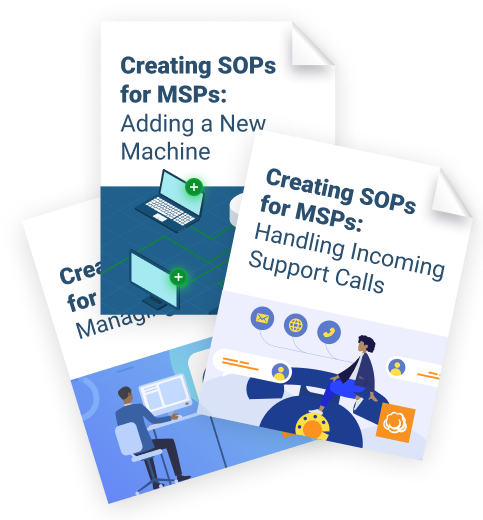Running a business is challenging, even in the best of times, let alone in times of economic instability. More than ever, it is important to think about your business processes and identify opportunities to eliminate costly inefficiencies or errors. This way, you’re in the best position possible to weather any turbulence brought on by the coronavirus pandemic and emerge safely once it’s over.
To help you do that, we’ve put together 10 business mistakes to avoid at all costs, regardless of your company’s size or how long you’ve been in business.
1. Failing to Create and Stick to a Business Plan
Your business plan is your road map—guiding your budget, operations, and mission. It’s crucial that you and your team stick to it, keeping pace with the goals and guidelines you set early on.
But to position your company for success, your business plan must be designed to function well in times of both ease and instability, taking account of variables beyond your control—from national economic trends to global crises. To be prepared in this ever-changing economy, create different scenarios for stable and unsteady revenue flow. That way, you’ll be prepared to stick to your internal plan, regardless of external circumstances.
2. Failing to Provide Value to Your Customers
In times of economic instability, paying close attention to customer retention and satisfaction is essential to preserving revenue streams.
Make sure you’re striking a good balance of giving existing customers prompt attention and smooth service, while still spending enough time prospecting for new clients. Check in with customers regularly, fix their problems quickly and efficiently, and make sure that each interaction you have with them leaves them with a valuable takeaway. In times of economic crisis, when companies and consumers are looking to see where they can cut costs, you want to be viewed as a trusted advisor, providing services that are indispensable.
3. Running Your Business with Disjointed Apps
Few things are more frustrating than having to use 10 different applications to accomplish a single task. Not only is the constant switching in and out inefficient, but it also increases the opportunity for error. Look for a single software that will help you manage and grow your business and will streamline your operations and save you and your customers valuable time.
4. Failing to Establish a Process Early in the Customer Relationship
Today, as we transition to a prolonged phase of remote work, clear processes and workflows are more important than ever. When employees are scattered, the dreaded silos of chaos are only exacerbated. But with strong, simple processes that employees know and are prepared to follow from anywhere, your company can transition with ease in any situation.
Lots of IT companies start with a small group of talented people working for a small pool of clients. But eventually, as their customer base grows, it can become difficult to scale operations, which in turn can stunt growth. Make sure you’re set up for success from the get-go, by establishing well-designed processes and incorporating tools that facilitate them early on.
Invest time in documentation that can streamline daily business activities. Without these processes in place to structure your workflow, even the most motivated employees can find themselves adrift. Plan your workflow, from sales to invoices, so all members of your team know their roles inside and out. In times of transition, the teams that adapt best are those with strong processes in place.

![]()
5. Not Tracking Time Accurately
As we all know, time is money! You never want to waste it. In periods of economic instability or a transition to remote work, it’s important to keep an eye on the clock to make sure your team is being utilized to its fullest capacity. This ensures that your customers get the best value for their dollar, and your bottom line sees the maximum profit.
Consistent and organized time tracking gives you an accurate overview of your company’s big-picture operations, offering valuable insights on:
-
- Whether or not you need to grow your team
- How you should charge for your services
- Whether you’re meeting your SLAs
6. No Automation
As a technology company, a huge part of your job involves streamlining your clients’ systems, so why wouldn’t you streamline your own?
With a professional services automation tool, you can automate any IT process or task that’s slowing your team down and devaluing your billable hours. And right now, when efficiency is more important than ever, the extra boost that automation provides can do wonders for your productivity.
7. Creating Quotes in Spreadsheets
Whether you’re a big business or a small start-up, you need quotes that are professional and customizable, especially when customers are re-evaluating their budgets. That’s because, say what you will, appearance matters. And sending a quote in a basic spreadsheet, rather than a more polished method, might jeopardize your customers' trust.
There are a plethora of accessible applications that have built-in quoting features that were designed for the job. With these tools, you can sell from anywhere, with clean, time-efficient quotes, and functionality, unlike any spreadsheet. Now more than ever, you want to ensure you’re prepared to sell remotely. And this is a way for you to eliminate wasted time and error, while giving clients a great impression of your business.
8. Not Making Data-Driven Decisions
Hunches, intuitions, and whims might work for making business decisions when times are good. But when the market is hurting, you need something more concrete. Thankfully, we live in the digital age, which means we have data and lots of it.
From the moment you launch your business, every decision you make, as a technology leader, should be supported by data. Over time, as you make sales and add customers, consult key performance indicators (KPIs) and other crucial metrics when making big-picture decisions.
To start, think about which metrics you plan to track and why they’re important. Then, make a plan to hold yourself accountable to a tracking plan. To understand what your company can achieve and how you can bring it to the next level, you need a firm grasp on all the data that contextualizes your business, including KPIs, benchmarks, and overarching strategy metrics. For better results, make sure your decisions are based on data.
9. Not Marketing Your Business Cost-Effectively
It’s a well-known business principle: it costs more money to acquire a new customer than it does to keep an existing one. That said, even in times of economic downturn, you don’t need to put your customer-acquisition marketing efforts on hold, you just need to tailor them to the moment (and keep your budget in mind).
Think about well-known marketing tactics, paid vs. organic marketing, and consider which is better aligned with your budget. Also consider free or inexpensive options like referral programs, and measure how they weigh against more traditional advertising. Finally, make sure you’re always paying close attention to KPIs like customer acquisition cost (CAC), which is helpful in evaluating the cost and value of reeling in new clients.
Whether you’re focused on growth or retention, remember to think about how your marketing efforts impact and drive your bottom line.
10. Charging the Wrong Amount for Your Services
The service provider landscape is competitive. On the one hand, it’s important to resist bending to every pricing demand set forward by your clients. You know better than anyone how much your services are worth and how much your operations cost internally. If you’re providing consistent value to your clients, you can set and stick to prices that are fair and keep you competitive.
On the other hand, in a turbulent market, some customers are experiencing challenges that may prevent them from keeping up with their bills. As you think about pricing, you should also think about who your ideal clients are. Ask yourself which clients you’re determined to keep working with, and which you may need to let go of. By referring to KPIs, you can gauge the costs and benefits of each individual relationship and make decisions that move your company forward.






